#getty bronze
Text
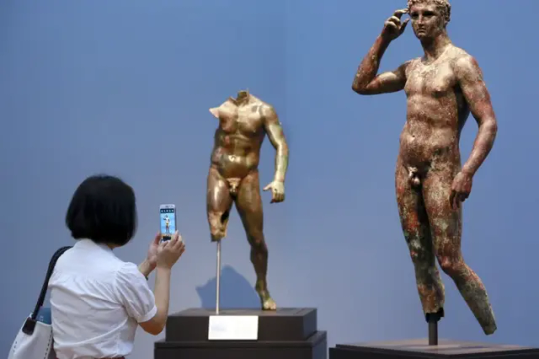
European Court Upholds Italy's Right to Seize Greek Bronze from Getty Museum
A European court on Thursday upheld Italy’s right to seize a prized Greek statue from the J. Paul Getty Museum in California, ruling that Italy was justified in trying to reclaim an important part of its cultural heritage and rejecting the museum’s appeal.
The European Court of Human Rights, or ECHR, determined that Italy’s decades-long efforts to recover the “Victorious Youth” statue from the Malibu-based Getty were not disproportionate.
“Victorious Youth,” a life-sized bronze dating from 300 B.C. to 100 B.C., is one of the highlights of the Getty’s collection. Though the artist is unknown, some scholars believe it was made by Lysippos, Alexander the Great’s personal sculptor.
The bronze, which was pulled from the sea in 1964 by Italian fishermen and then exported out of Italy illegally, was purchased by the Getty in 1977 for $4 million and has been on display there ever since.
The Getty had appealed to the European court after Italy’s high Court of Cassation in 2018 upheld a lower court’s confiscation order. The Getty had argued that its rights to the statue, under a European human rights protocol on protection of property, had been violated by Italy’s campaign to get it back.
The court ruled Thursday that no such violation had occurred.
“This is not just a victory for the Italian government. It’s a victory for culture,” said Maurizio Fiorilli, who as an Italian government attorney had spearheaded Italy’s efforts to recover its looted antiquities and, in particular, the Getty bronze.
The Getty has long defended its right to the statue, saying Italy had no legal claim to it.
Among other things, the Getty had argued that the statue is of Greek origin, was found in international waters and was never part of Italy’s cultural heritage. It cited a 1968 Court of Cassation ruling that found no evidence that the statue belonged to Italy.
Italy argued the statue was indeed part of its own cultural heritage, that it was brought to shore by Italians aboard an Italian-flagged ship and was exported illegally, without any customs declarations or payments.
After years of further legal wrangling, an Italian court in Pesaro in 2010 ordered the statue seized and returned, at the height of Italy’s campaign to recover antiquities looted from its territory and sold to museums and private collectors around the globe.
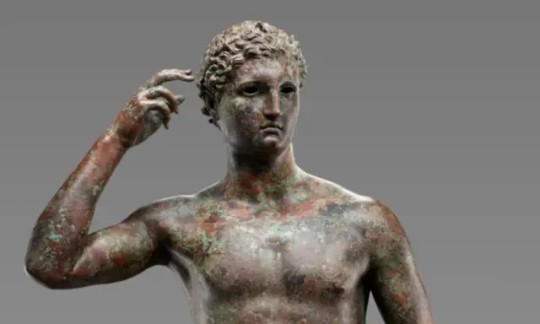

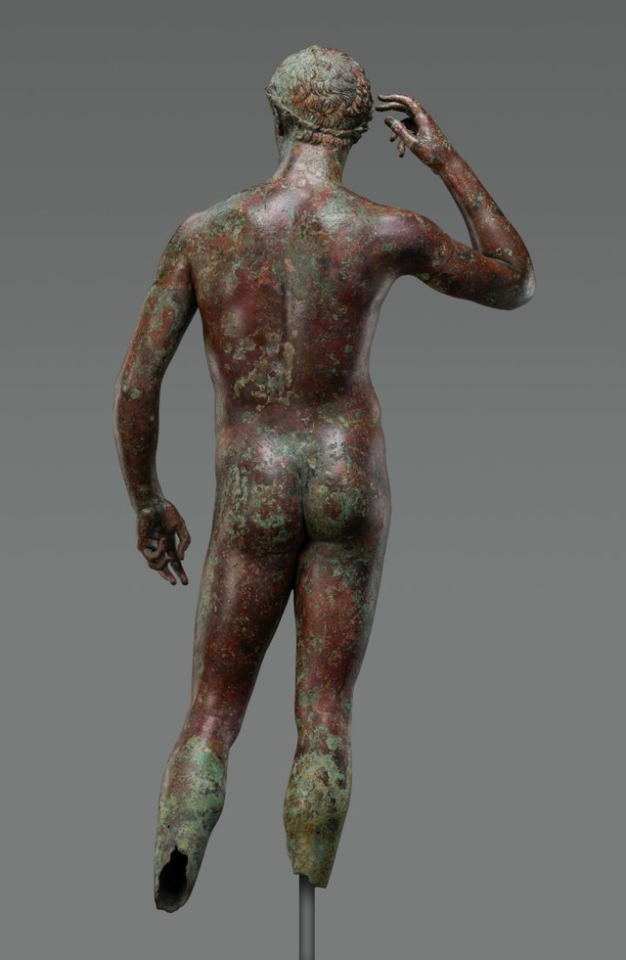
Thursday’s ruling by the Strasbourg, France-based ECHR was a chamber judgment. Both sides now have three months to ask that the case be heard by the court’s Grand Chamber for a final decision. But Thursday’s ruling was unanimous, with no dissenting judges, and the Grand Chamber can refuse to hear the case.
There was no immediate comment from the Getty, and its lawyers referred comment to the museum.
Italian Culture Minister Gennaro Sangiuliano praised Thursday’s decision as an “unequivocal ruling” that recognized the rights of the Italian state and its ownership of the statue.
“Following today’s ruling … the Italian government will restart contacts with U.S. authorities for assistance in the implementation of the confiscation order,” he said.
In a statement, he doubled down on Italy’s campaign to bring its looted treasures home, and noted that recently Italy has ceased cooperation with foreign museums that don’t recognize Italian legal confiscation orders.
Recently, Italy banned any loans to the Minneapolis Institute of Art following a dispute over an ancient marble statue believed to have been looted from Italy almost a half-century ago.
The Getty had appealed to the ECHR by arguing, among other things, that Italy’s 2010 confiscation order constituted a violation of its right to enjoy its possessions and that it would be deprived of that right if U.S. authorities carried out the seizure.
The ECHR however strongly reaffirmed Italy’s right to pursue the protection of its cultural heritage, especially from unlawful exportation.
“The court further held that owing, in particular, to the Getty Trust’s negligence or bad faith in purchasing the statue despite being aware of the claims of the Italian state and their efforts to recover it, the confiscation order had been proportionate to the aim of ensuring the return of an object that was part of Italy’s cultural heritage,” said the summary of the ruling.
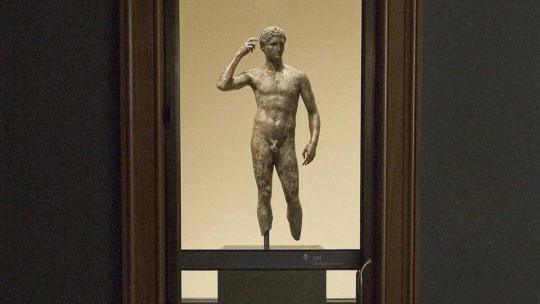

It wasn’t immediately clear what would happen next, though Fiorilli said the Getty had exhausted legal remedies and it’s now for U.S. the courts to enforce the Italian confiscation order.
“It’s not about guaranteeing the right to property, it’s about guaranteeing the internationally recognized value of every nation’s right to protect its cultural patrimony,” Fiorilli told The Associated Press over the telephone.
The statue, nicknamed the “Getty Bronze,” is a signature piece for the museum. Standing about 5 feet (1.52 meters) tall, the statue of the young athlete raising his right hand to an olive wreath crown around his head is one of the few life-sized Greek bronzes to have survived.
The bronze is believed to have sunk with the ship that was carrying it to Italy after the Romans conquered Greece. After being found in the nets of Italian fishermen trawling in international waters in 1964, it was allegedly buried in an Italian cabbage patch and hidden in a priest’s bathtub before it was taken out of the country.
Italy has successfully won back thousands of artifacts from museums, collections and private owners around the world that it says were looted or stolen from the country illegally, and recently opened a museum to house them until they can be returned to the regions from where they were looted.
The most important work to date that Italy has successfully brought back is the Euphronios Krater, one of the finest ancient Greek vases in existence. The Metropolitan Museum of Art in New York, which purchased it for $1 million in 1972 from an art dealer later accused of acquiring looted artifacts, returned it to Italy in 2008.
In 2010, the same year that Italy ordered the “Victorious Youth” statue confiscated from the Getty, a criminal trial ended in Rome against the Getty’s former curator of antiquities, Marion True. After years of trial, the Rome court ruled that the statute of limitations had expired on charges that True received stolen artifacts. She has denied wrongdoing.
In 2007, the Getty, without admitting any wrongdoing, agreed to return 40 ancient treasures in exchange for the long-term loans of other artifacts. Similar deals have been reached with other museums.
Under the 2007 deal, the two sides agreed to postpone further discussion of “Victorious Youth” until the court case was decided.
By Nicole Winfield.
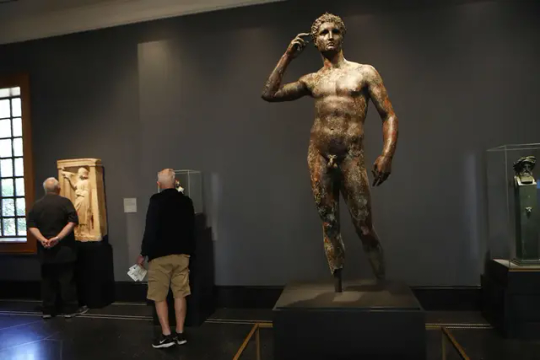
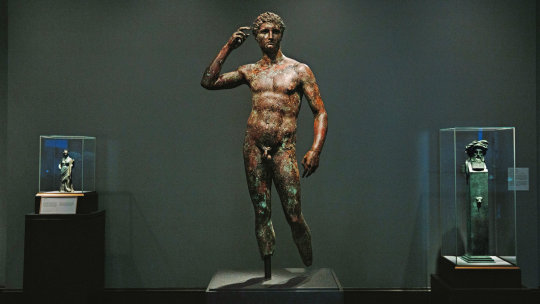
#European Court Upholds Italy's Right to Seize Greek Bronze from Getty Museum#J. Paul Getty Museum#bronze#bronze statue#bronze sculpture#getty bronze#Victorious Youth#ancient artifacts#archeology#archeolgst#history#history news#ancient history#ancient culture#ancient civilizations#ancient greece#greek history#greek art#ancient art#stolen art#looted art
86 notes
·
View notes
Text
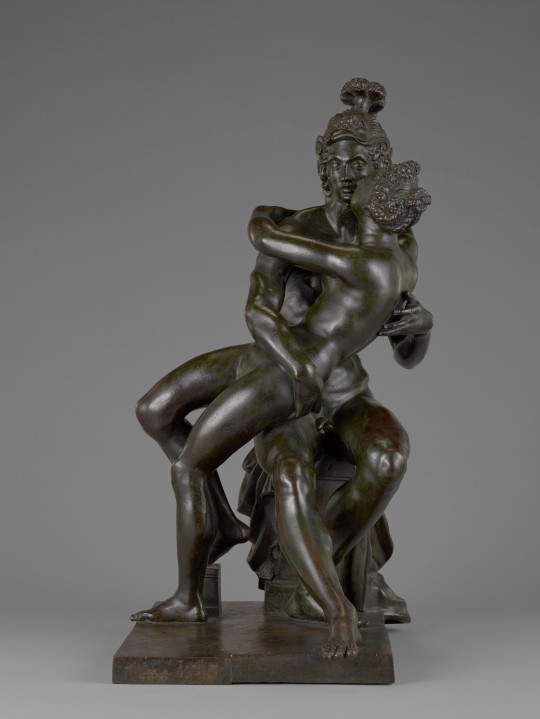
Mars and Venus, Hans Mont, 1580, bronze, Getty Museum.
#sculpture#art history#mannerism#mars and venus#mythology#statuette#16th century#bronze#getty museum
83 notes
·
View notes
Photo


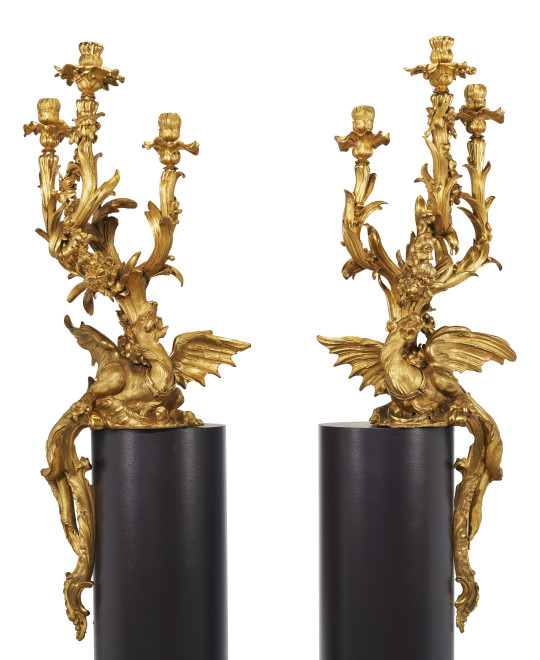
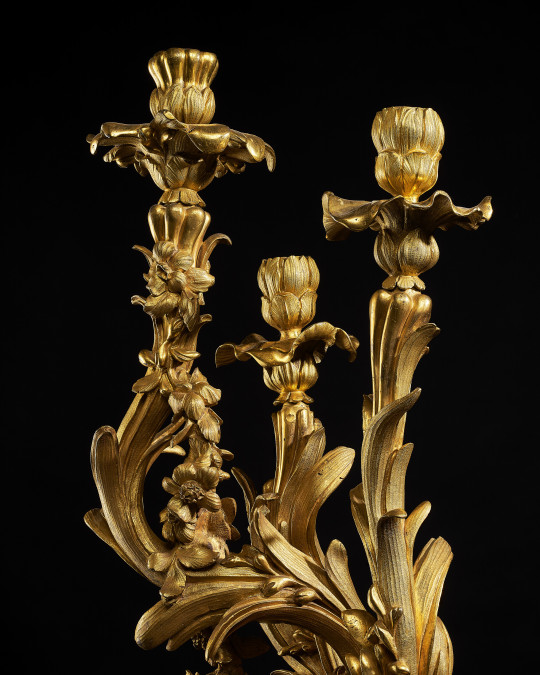

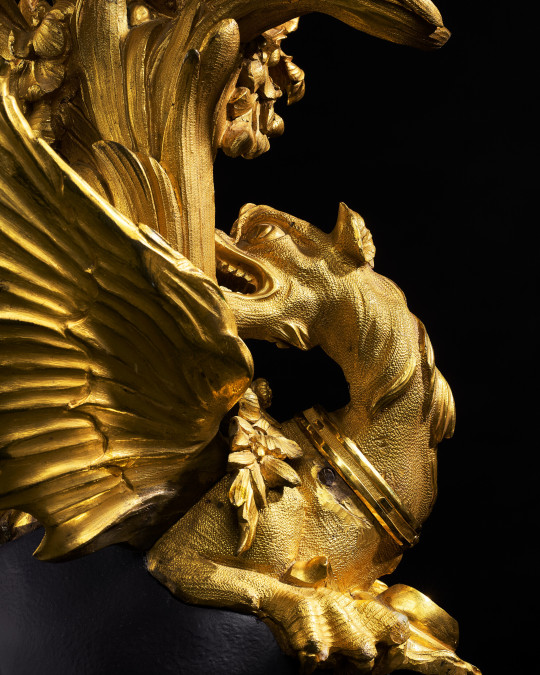
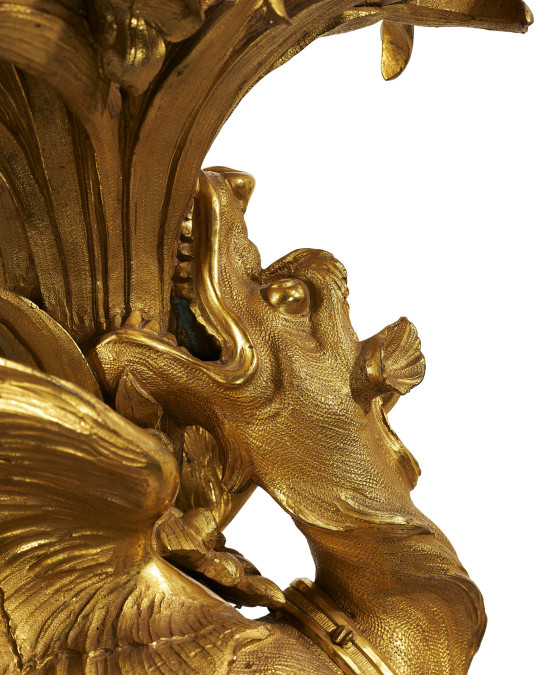
Louis XV Gilt-Bronze Three-Light ‘Girandoles de cheminée,’ Circa 1745-1746,
Probably designed by Pierre Constant d’Ivry and executed by Antoine Lelièvre for Joseph Crozat de Tugny for his hotel particulier, Place Vendome in Paris designed by architect Pierre Bullet.
52 1/2 in. (133.5 cm.) high16.5 in. (42 cm.) wide.
Courtesy: Christie’s
#art#design#sculpture#girandole#candle#holder#louis XV#bronze#pierre constant d'ivry#antoine lelièvre#joseph crozat de tugny#style#history#patino#givenchy#getty#plave vendome#paris#collector's#luxurylifestyle#luxuryhouses#luxuryhomes#hubert de givenchy#antenor patino#anne getty#gordon getty#chemney#pierre bullet#christie's
189 notes
·
View notes
Photo

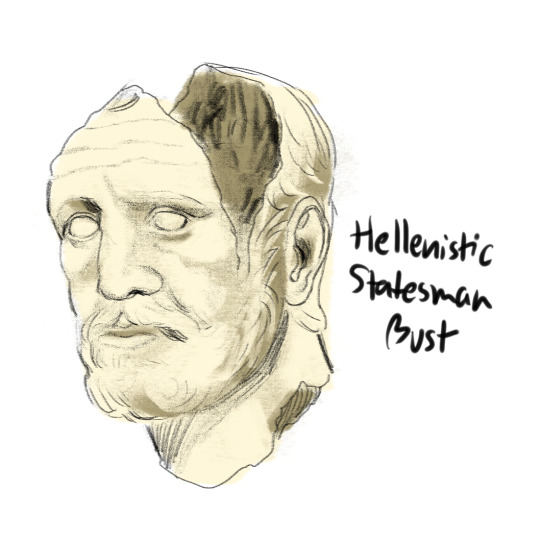


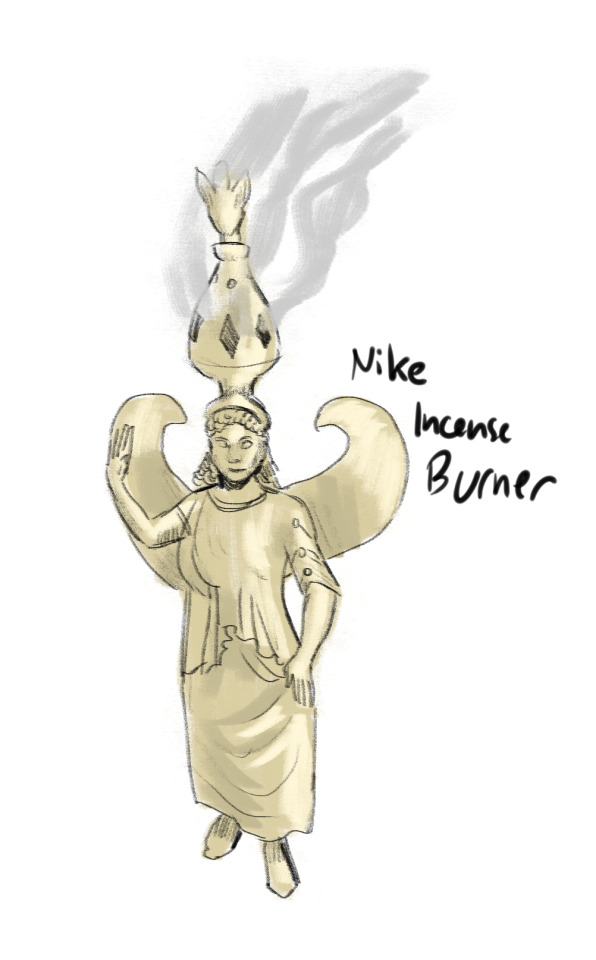
It looks like I might start cheating on Twitter with tumblr again. I hope you all missed my ancient museum piece drawings. Here is a horned one and some objects from the Getty Villa.
85 notes
·
View notes
Text

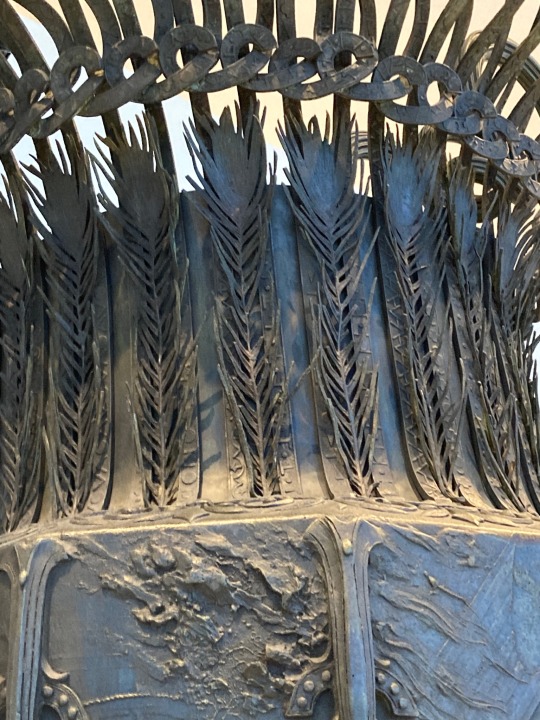
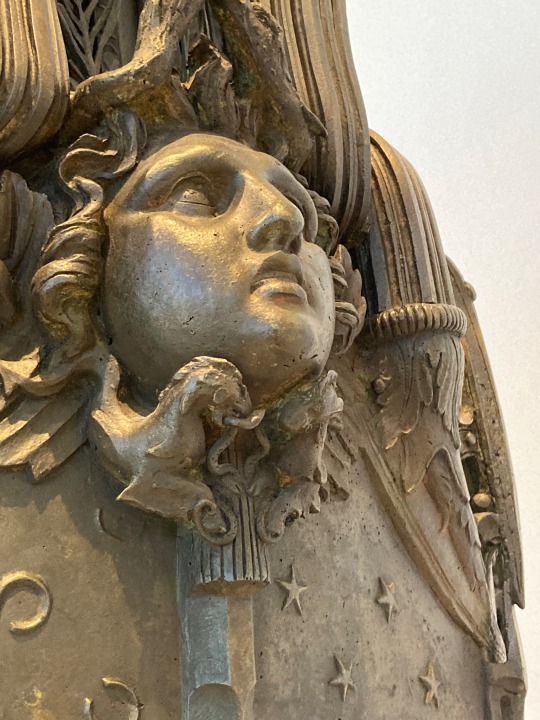



Monumental Vase
Jean-Desire Ringel d'Illzach
Bronze
1889
The Getty Center
#monumental vase#vase#krater#cast bronze#jean-desire ringel d'illzach#peacock feathers#roman mask#bats#snails#getty center#los angeles
8 notes
·
View notes
Text



Had a great visit to the Getty Villa and enjoyed seeing these two small Etruscan bronzes
1 note
·
View note
Text

Black face
#bronze statue#sculpture garden#museum#getty villa#malibu#los angeles county#california#photo#digital#original photographers
0 notes
Photo

Seoul, South Korea
A bronze sculpture by the artist Hwang Man-seok, which is modelled on the horse-riding hand gesture from South Korean singer PSY’s track, Gangnam Style
Photograph: Anthony Wallace/AFP/Getty Images
#anthony wallace#photographer#afp#getty images#seoul#south korea#bronze sculpture#hwang man-seok#artist#horse-riding hand gesture#south korean singer psy track / gangnam style#culture
1 note
·
View note
Text
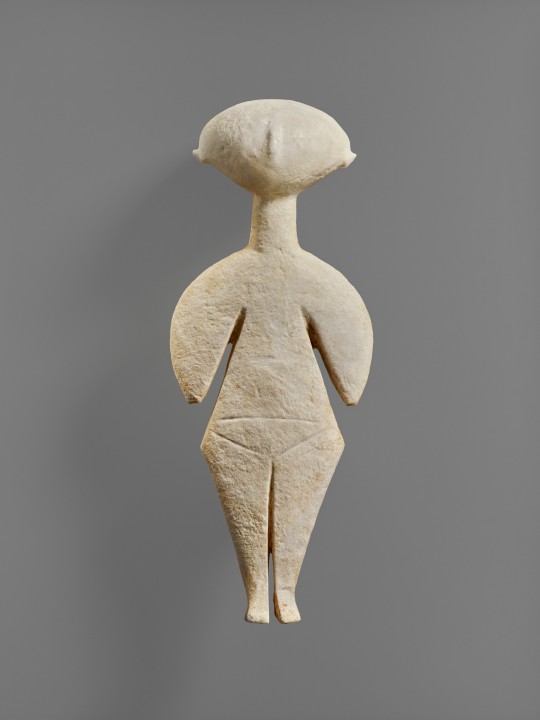
Female Figure of the Kilia Type
4500–3500 B.C.
Unknown artist/maker
On view at Getty Villa, Gallery 113, Neolithic and Bronze Age Greece
520 notes
·
View notes
Text
Prehistoric Figurine of a Harp Player, from the Cyclades (Greece), c. 2700-2300 BCE: this figurine was shaped from a block of solid marble and then slowly sanded into form using pumice and emery

The figurine depicts a musician with a frame harp, an instrument that originated in the Near East and then later spread to the peoples of the Aegean. A sound box forms the section along the base of the instrument, and a small protrusion can be seen near the top of the harp's frame; some experts have argued that this protrusion might represent an ornamental carving of a waterfowl's head, while others argue that it represents a musical extension that facilitates the projection of sound (a feature that often appears on the stringed instruments of the ancient Near East).
This piece measures 35.8cm (about 14 inches) tall.
Musical performances like this are rarely depicted in Cycladic artwork. Depictions of male characters are similarly rare, representing only 5% of the Cycladic sculptures that are known to exist. When male figures are depicted, however, they are frequently shown playing musical instruments, as seen here.

Figurine of a Harpist, c. 2800-2700 BCE: a similar example of a Cycladic sculpture that features a musician with a frame harp
The Museum of Cycladic Art provides a more detailed explanation of the process by which these figures were created:
As we can deduce from the few unfinished figurines that have been discovered so far, the first step in the process was to roughly shape the raw piece of marble into a figure by the impact of a mallet. Emery powder was then used to abrade the surface until it obtained the desired shape and size. Once the desired shape was achieved, the surface was smoothed carefully before the fine work of carving the details started. At the end, the figurine was polished to a high degree that is still amazing.
And according to The Met:
Many of these figures, especially those of the Spedos type, display a remarkable consistency in form and proportion that suggests they were planned with a compass. Scientific analysis has shown that the surface of the marble was painted with mineral-based pigments—azurite for blue and iron ores, or cinnabar for red.
The Cycladic Islands (also known as the Cyclades) are a group of about 30 separate islands in the Southwest Aegean, off the coast of mainland Greece. These islands contain a wealth of natural resources, including marble, emery, pumice, obsidian, and an assortment of precious metals. The prehistoric peoples of the Cyclades made use of these resources for many different purposes, but the marble figurines/sculptures that they crafted during the Bronze Age are perhaps their most famous creation.
The vast majority of these figurines are stylized depictions of the female form. The cultural significance of the sculptures remains unclear; they may have simply been created as decorative pieces/artwork, without any additional function, or they may have been used as fetishes, totems, religious idols, grave goods, or votive offerings.
Sources & More Info:
The Getty Museum: Figurine of a Harp Player
The Met: Cycladic Harp Player
The Met: Early Cycladic Art and Culture
The Museum of Cycladic Art: Techniques
#archaeology#history#artifact#ancient history#prehistoric art#art#sculpture#music#greece#cycladic#bronze age#anthropology#harp
1K notes
·
View notes
Text

Bronze Roman Eagle Statue- AD 100
Getty Museum, Los Angeles, via Google Arts & Culture
482 notes
·
View notes
Text

The Getty Museum Return Ancient Bronze Head to Turkey
A life-sized bronze head of a young man has been removed from view by the J. Paul Getty Museum in Los Angeles and will be returned to Turkey after the institution learned it was illegally excavated.
The head had been in the antiquities collection at the Getty Villa Museum since it was acquired in 1971. But the museum said it had received new information from the Manhattan District Attorney’s Office in New York indicating it had been illegally excavated.
The California museum did not reveal what new information had come to light about the excavation, and officials in New York did not yet respond to a request for information. The head has been removed from view until it can be handed over to Turkish officials.
“In light of new information recently provided by Matthew Bogdanos and the Antiquities Trafficking Unit of the Manhattan District Attorney’s Office indicating the illegal excavation of this bronze head, we agreed that the object needed to be returned to Türkiye,” museum director Timothy Potts said in a statement.
The district attorney’s office did not immediately respond to a request for comment about the details of its investigation.
The Getty Museum said that its policies are to return objects to the country of their origin or modern discovery when reliable information indicates they were stolen or illegally excavated. In 2022, the museum returned a cache of artworks to Italy after learning that they were linked to disgraced antiquities dealer Gianfranco Becchina.
The bronze head dates to somewhere between 100 B.C.E and 100 C.E. and is a separately cast component of a life-size figure, detached from the body at the upper neck. The eyes were once inlaid with an unknown material that was not preserved. Researchers have not yet identified the body of the figure. The subject of the figure also remains elusive as it was fabricated in a “highly idealized” style and has not been matched to a member of an imperial family or other named individual, the museum said, although an inscribed alpha (“A”) is visible on the interior of the neck at the bottom rear edge.
Some scholars have associated the bronze head with the archaeological site of Bubon, in the Burdur province of southwestern Turkey. Bubon was subjected to illicit excavations in the late 1960s.
Potts added that by returning the head to Turkey, the museum seeks to continue building a constructive relationship with the Turkish Ministry of Culture archaeological colleagues in the country.
In total, the Manhattan District Attorney’s antiquities trafficking unit has recovered more than 4,500 antiquities stolen from 30 countries with a value in excess of $410 million since it was launched in 2017.
By Adam Schrader.
#The Getty Museum Return Ancient Bronze Head to Turkey#bronze#bronze sculpture#stolen art#looted art#ancient artifacts#archeology#archeolgst#history#history news#ancient history#ancient culture#ancient civilizations#ancient art#roman history#roman empire#roman art
122 notes
·
View notes
Text

Study and Philosophy, attributed to Pierre-Philippe Thomire after models by Louis-Simon Boizot, c. 1780-1785, bronze, J-P Getty Museum.
57 notes
·
View notes
Text

Bronze aplique depicting the sun god Usil, Etruscan, 500-475 BC
from The J. Paul Getty Museum
720 notes
·
View notes
Photo

Jupiter. model about 1670, probably cast about 1680–1700 after a model attributed to Jean Roan French, 1630 - 1707. bronze. Getty Museum. http://hadrian6.tumblr.com
205 notes
·
View notes
Text

This winged feline (500–400 B.C.) originally served as the front leg of a wooden chair or throne. Felines were popular in the art of many Mediterranean and Near Eastern cultures. Certain stylistic features of this piece, as well as the manner in which it was made from separate pieces of bronze joined together, suggest that this work was created in Spain, specifically in the kingdom of Tartessos. The form of the feline's brow is a Tartessian characteristic, as is the triangle design in the creature's ear. Image by Getty Museum.
Learn more / Daha fazlası
Tartessos https://www.archaeologs.com/w/tartessos/
#archaeologs#archaeology#archaeological#dictionary#history#art#mediterranean#culture#tartessos#spain#iberia#tartesian#arkeoloji#tarih#sanat#ispanya
62 notes
·
View notes